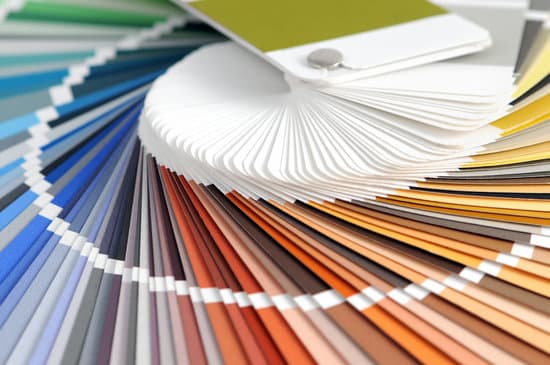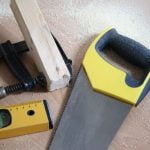When considering home improvements, homeowners often turn to loans for financial support. One common option is utilizing home equity to secure a loan specifically tailored for renovations and upgrades. But just how much equity do you need for a home improvement loan? Understanding the concept of home equity and its implications is crucial in navigating this financial decision effectively.
Home equity refers to the difference between the current market value of your home and the outstanding balance on your mortgage. This equity can be used as collateral for a loan, making it easier to qualify for financing at favorable interest rates. The amount of equity required for a home improvement loan depends on various factors, including the lender’s policies, the type of renovation being undertaken, and your overall financial profile.
Calculating your current home equity value is essential in determining how much you can borrow for renovations. By subtracting your remaining mortgage balance from the current market value of your home, you can ascertain the amount of equity available to leverage for a loan. Additionally, lenders often consider the loan-to-value ratio when determining the maximum amount they are willing to lend based on your home’s value and equity position.
Importance of Equity in Securing a Home Improvement Loan
Home equity plays a crucial role in securing a home improvement loan as it represents the value of your home that you truly own. Lenders typically use the amount of equity you have in your home as security for the loan, making it a less risky option for them compared to unsecured loans.
The more equity you have, the better chances you have of qualifying for a larger loan amount with favorable terms and interest rates. This is why understanding how much equity is needed for a home improvement loan is key to successfully financing your renovation project.
One of the main factors that determine how much equity is required for a home improvement loan is the loan-to-value (LTV) ratio. LTV ratio is calculated by dividing the amount of money you owe on your mortgage by the appraised value of your home. Most lenders prefer an LTV ratio of 80% or lower, meaning they would want you to have at least 20% equity in your home.
However, this may vary depending on the lender and type of loan you are applying for. For example, some lenders may offer loans with higher LTV ratios but at higher interest rates.
To calculate your current home equity value, simply subtract the amount you owe on your mortgage from the current market value of your home. For example, if your home is valued at $300,000 and you still owe $200,000 on your mortgage, then you have $100,000 in equity ($300,000 – $200,000 = $100,000).
Increasing your home equity can be achieved through paying off more of your mortgage principal or making improvements to increase the value of your property.
| Equity Calculation Example | Calculation |
|---|---|
| Home Value | $300,000 |
| Mortgage Owed | $200,000 |
| Equity | $100,000 |
Factors That Determine How Much Equity Is Needed for a Home Improvement Loan
Home equity plays a crucial role in determining how much you can borrow for a home improvement loan. Lenders typically require a certain amount of equity in your home as security for the loan. The more equity you have, the more likely you are to qualify for a larger loan amount with better terms and lower interest rates. But how much equity is actually needed for a home improvement loan?
Several factors come into play when determining how much equity is required for a home improvement loan. These factors include the current market value of your home, the outstanding mortgage balance, and the lender’s specific requirements. Generally, lenders may require anywhere from 10% to 20% or more in equity before approving a home improvement loan. This percentage may vary depending on the lender and the type of loan you are applying for.
To calculate how much equity you currently have in your home, you can follow these simple steps:
- Determine the current market value of your home.
- Subtract any outstanding mortgage balance or loans secured by your property.
- The remaining amount is your available equity that can be used towards a home improvement loan.
Understanding how much equity is needed for a home improvement loan can help you better plan and prepare for your renovation projects. By knowing your current equity position and taking steps to increase it if necessary, you can improve your chances of securing the financing you need for your dream home upgrades.
Calculating Your Current Home Equity Value
Understanding Home Equity
Before diving into the specifics of calculating your current home equity value for a home improvement loan, it is important to understand what home equity actually means. Home equity refers to the difference between the market value of your home and the outstanding balance on your mortgage.
Essentially, it represents how much of your property you truly own. Building equity in your home is crucial as it serves as a valuable asset that can be leveraged for various financial needs, such as funding a renovation project.
Calculating Your Home Equity
To determine how much equity you have in your home, you will first need to gather some information. Start by finding out the current market value of your property. This can be done through a professional appraisal or by studying recent comparable sales in your neighborhood. Next, subtract the amount you still owe on your mortgage from the estimated market value of your home. The resulting figure is your home equity.
Importance of Knowing Your Home Equity Value
Knowing your current home equity value is essential when considering applying for a home improvement loan. Lenders use this information to determine how much they are willing to lend you based on the available equity in your property.
The higher the amount of equity you have, the more favorable terms and options you may receive when seeking financing for renovation projects. By accurately calculating and keeping track of your home equity, you can make informed decisions regarding borrowing against it for various improvements to enhance the value of your home.
The Role of Loan-to-Value Ratio in Determining Loan Amount
When applying for a home improvement loan, one of the key factors that lenders consider is the loan-to-value (LTV) ratio. This ratio is used to assess how much equity you have in your home compared to the amount of the loan you are requesting. The LTV ratio plays a crucial role in determining the loan amount that you qualify for, as it helps lenders evaluate the risk associated with lending you money for renovations.
Understanding Loan-to-Value Ratio
The loan-to-value ratio is calculated by dividing the total amount of outstanding mortgage debt on your home by its current market value. For example, if your home is valued at $300,000 and you still owe $200,000 on your mortgage, your LTV ratio would be 67% ($200,000/$300,000). Lenders typically set a maximum LTV ratio that they are willing to work with when approving home improvement loans.
Impact on Loan Amount
The higher your loan-to-value ratio, the less equity you have in your home, which can affect the amount of money you can borrow for renovations. Lenders prefer to see lower LTV ratios as it signifies lower risk for them.
If you have a high LTV ratio, it may be more challenging to secure a larger loan amount or obtain favorable terms on your home improvement loan. Therefore, it is crucial to consider how much equity is needed for a home improvement loan and work towards reducing your LTV ratio through various strategies such as making extra mortgage payments or increasing property value through upgrades.
Strategies to Increase Equity for a Home Improvement Loan
When considering a home improvement loan, one crucial factor to take into account is the amount of equity you have in your home. Equity refers to the value of your home minus any outstanding mortgage balance. The more equity you have, the better position you are in to secure a larger loan at a favorable interest rate. If you are wondering how much equity for a home improvement loan is needed, it ultimately depends on various factors.
One effective strategy to increase your home equity is by making extra payments towards your mortgage principal. By paying more than the required monthly amount, you can reduce the principal balance faster and build equity at an accelerated pace. Another way to boost your equity is by focusing on increasing the value of your property through renovations or upgrades. Improving your home’s overall condition and aesthetic appeal can lead to a higher appraisal value, thereby increasing your equity position.
It is also essential to keep an eye on market trends and fluctuations in real estate values when seeking to increase your home equity for a loan. Monitoring the housing market can give you valuable insights into when it might be favorable to refinance or consider tapping into your equity for a loan.
By staying informed and proactive about managing and growing your home equity, you can better position yourself to leverage it for important financial needs such as home improvements.
| Strategies | Results |
|---|---|
| Extra payments towards mortgage principal | Increase in equity at an accelerated pace |
| Home renovations/upgrades | Rise in property value and improved equity |
| Market monitoring and timely decisions | Opportune times for refinancing or using home equity |
Pros and Cons of Using Home Equity for Home Renovations
Using home equity for home renovations can be a great way to access funds for your projects, but it’s important to weigh the pros and cons before moving forward. One of the main benefits of using home equity is that it allows you to take advantage of lower interest rates compared to other types of loans, such as personal loans or credit cards.
This means you can potentially save money on interest payments over the life of the loan, making it a more cost-effective option in the long run.
On the flip side, using home equity for renovations means putting your home on the line as collateral. If you run into financial difficulties and are unable to make payments, you could risk losing your home.
It’s crucial to carefully assess your financial situation and ensure that you have a solid plan in place for repayment before tapping into your home equity. Additionally, using up all of your available equity for renovations may limit your ability to borrow against it in the future if needed.
When considering how much equity is needed for a home improvement loan, lenders typically look at factors such as your credit score, debt-to-income ratio, and the loan-to-value ratio of your property. The loan-to-value ratio is calculated by dividing the amount of the loan by the appraised value of your home.
Generally, lenders prefer a loan-to-value ratio of 80% or lower when approving home improvement loans. This means that you would need at least 20% equity in your home to qualify for a loan.
In order to increase your equity for a home improvement loan, you can take steps such as making extra mortgage payments, increasing the value of your property through renovations or upgrades, or waiting for natural appreciation in property values over time. By building up your equity position, you may be able to access more favorable loan terms and secure additional funds for larger renovation projects.
Remember that each homeowner’s financial situation is unique, so it’s important to consult with a financial advisor or lender to determine how much equity you’ll need for a successful home improvement loan application.
Alternative Financing Options for Home Improvements if Equity Is Insufficient
If you are in need of funds for home improvements but find that your equity is insufficient to secure a home improvement loan, there are still alternative financing options available to you. One such option is a personal loan, which does not require any equity in your home for approval.
Personal loans are unsecured loans that can be used for various purposes, including home renovations. However, it’s important to note that personal loans typically come with higher interest rates compared to home equity loans or lines of credit.
Another alternative financing option for home improvements is a home improvement loan specifically designed for this purpose. These loans are often unsecured and may have lower interest rates than personal loans. They can be used to finance specific projects such as kitchen remodels, bathroom upgrades, or roof repairs. Additionally, some lenders offer government-backed renovation loans which can be a good option if you do not have enough equity in your home.
Lastly, if you do not qualify for a traditional loan due to insufficient equity or other reasons, you may consider using a credit card to fund your home improvement project. While credit cards typically have higher interest rates than other types of loans, they can be a convenient way to finance smaller renovation projects.
Just make sure to carefully weigh the pros and cons of using a credit card for home improvements and consider the repayment terms before making a decision on how to fund your project.
Conclusion
In conclusion, understanding the concept of home equity is crucial when considering a home improvement loan. Home equity plays a significant role in securing favorable terms and determining how much you can borrow for renovations. Factors such as your home’s current value, outstanding mortgage balance, and loan-to-value ratio all impact the amount of equity required for a home improvement loan.
Calculating your current home equity value is essential to assess your financial position and determine your borrowing capacity accurately. By increasing your equity through strategies such as making extra payments towards your mortgage, improving your property’s value, or waiting for property appreciation, you can potentially access more financing options for renovations.
While leveraging home equity for home improvements can be advantageous due to lower interest rates and potential tax benefits, it’s important to weigh the pros and cons carefully. Additionally, if your current equity is insufficient for your renovation plans, exploring alternative financing options such as personal loans or lines of credit may be necessary. Ultimately, finding the right balance between leveraging your home equity responsibly and achieving your desired home improvements is key in making informed financial decisions.
Frequently Asked Questions
Is It Smart to Use Home Equity for Home Improvement?
Using home equity for home improvement can be a smart move if done thoughtfully. It allows homeowners to access funds at potentially lower interest rates compared to other types of loans. However, it’s crucial to consider the risks involved such as potential loss of home equity and the need for repayment.
What Is the 30 Percent Rule for Home Renovation?
The 30 percent rule for home renovation suggests that homeowners should not spend more than 30% of their home’s value on renovations. This rule helps ensure that homeowners do not overcapitalize on their property and potentially lose money if they sell in the future. It is a general guideline to follow when planning renovations.
What Is the Monthly Payment on a $50000 HELOC?
The monthly payment on a $50,000 HELOC (Home Equity Line of Credit) would depend on various factors such as the interest rate, term length, and repayment structure. Generally, HELOC payments are interest-only during the draw period, followed by principal plus interest payments during the repayment period.
It is advisable to consult with a financial advisor or use an online calculator to determine the specific monthly payment amount for a $50,000 HELOC.

I’m thrilled to have you here as a part of the Remodeling Top community. This is where my journey as an architect and remodeling enthusiast intersects with your passion for transforming houses into dream homes.





